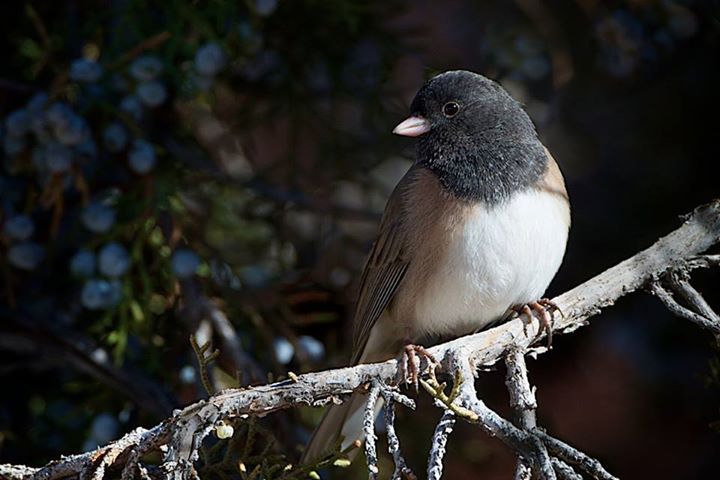A holiday tradition in the late 1890s brought hunters together in an annual competition to see who could hunt and kill the most birds. In 1900, ornithologist Frank Chapman proposed a new tradition, replacing the “Christmas Side Hunt” with the Christmas Bird Count – in response to growing concerns about declining bird populations.
Each year, for more than a century, citizen scientists from 15 communities worldwide have gathered for a day to observe, count and record various bird species and their numbers. Tallies are then sent to an international database that tracks winter bird populations.
Moab’s 31st annual Christmas Bird Count will take place on Saturday, Dec. 19. You don’t have to be a birding expert to participate in the Christmas Bird Count – although you do need a pair of binoculars. Novice birdwatchers are paired with seasoned birders.
“You can be an amateur,” said Marian Eason, a member of the Moab Bird Club, the group that organizes the annual event. “You learn quite a bit in one day. It’s just a fun day.”
Participants will spend most of the day recording birds within a 15-mile radius of Shrimp Rock, in the Sand Flats area. Twelve different groups will spread out to cover the areas of west and east Moab, Spanish Valley, Castle Valley and the Colorado River corridor. Volunteers are assigned to a team and particular section of town with a data sheet to record species and numbers.
As a participant for the past eight years, Marcy Hafner has observed unusual birds occasionally. Last year, she had the pleasure of spotting a pygmy owl – a bird rarely seen, she said. Another year, she observed a great horned owl.
Two rare songbirds – the Eastern blue jay and brown thrasher – were observed last year in a resident’s backyard, where both birds spent the winter.
“They’re not where they were last year,” Eason said. “Nobody’s seen them this year.”
Hafner compiles the data collected in Moab and sends it to a national Audubon office where professional scientists use the collective data to note and analyze various trends in migration. The Audubon Society website states that birds have “urgent” messages for humans regarding climate change.
Eason said she’s noticed some species have declined in numbers in the past few years.
“We used to have thousands of starlings – they’re way down,” she said. “And the number of robins have been down the last few years.”
Eason speculated that the robins may have moved to other areas as various groups have worked to remove invasive plant species such as tamarisk and Russian olive trees.
“Robins are particularly fond of Russian olives,” Eason said. “It may be the reason why we’re not seeing them. Sometimes birds just move to other areas. They change migration paths.”
Other trends noted by Hafner include huge numbers of Eurasian collared doves, an invasive species to Moab.
On the other hand, “we used to have huge numbers of Mountain bluebirds – now there’s just a few,” she said.
Individual group leaders determine where and what time to meet on Saturday – though most groups will start around 8 a.m., Eason said. Groups can count from “dawn to dusk” if they want, she said.
A post-count brunch will be held the following day, Sunday, Dec. 20, at The Nature Conservancy office, 820 Kane Creek Boulevard. Participants will compare notes and a preliminary review of count numbers will be presented.
The Moab Bird Club meets monthly for a potluck and often a presentation. The club also organizes other field trips such International Migratory Bird Day in early May. To learn more about the club, call Eason at 435-259-6447. To participate in the Moab Christmas Bird Count, contact Hafner, at 435-259-6197.
Another Christmas Bird Count will be held on Saturday, Jan. 2, 2016, at Dead Horse Point State Park. For more information about that bird count, contact Crystal White at 435-259-2614, or email crystalwhite@utah.gov.
Annual Christmas Bird Count follows migratory behaviors
“You learn quite a bit in one day. It’s just a fun day.”
What: Christmas Bird Count
When: Saturday, Dec.19
Where: Various locations around Moab, within a 15-mile radius of Shrimp Rock
Cost: Free
Info: 435-259-6197; or 435-259-6447
For more information about that bird count, contact Crystal White at 435-259-2614, or email crystalwhite@utah.gov.
To learn more about the club, call Eason at 435-259-6447. To participate in the Moab Christmas Bird Count, contact Hafner, at 435-259-6197.




